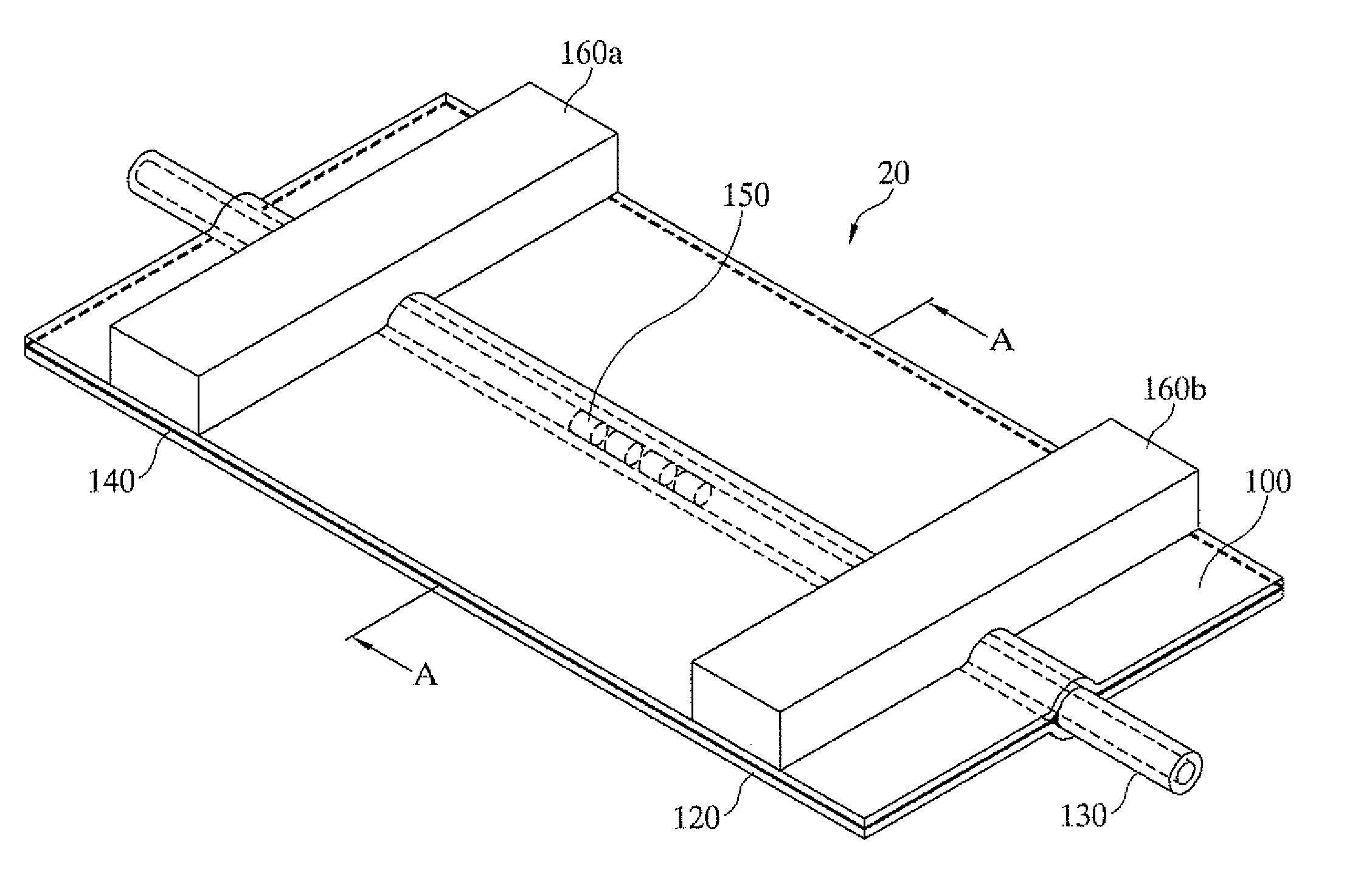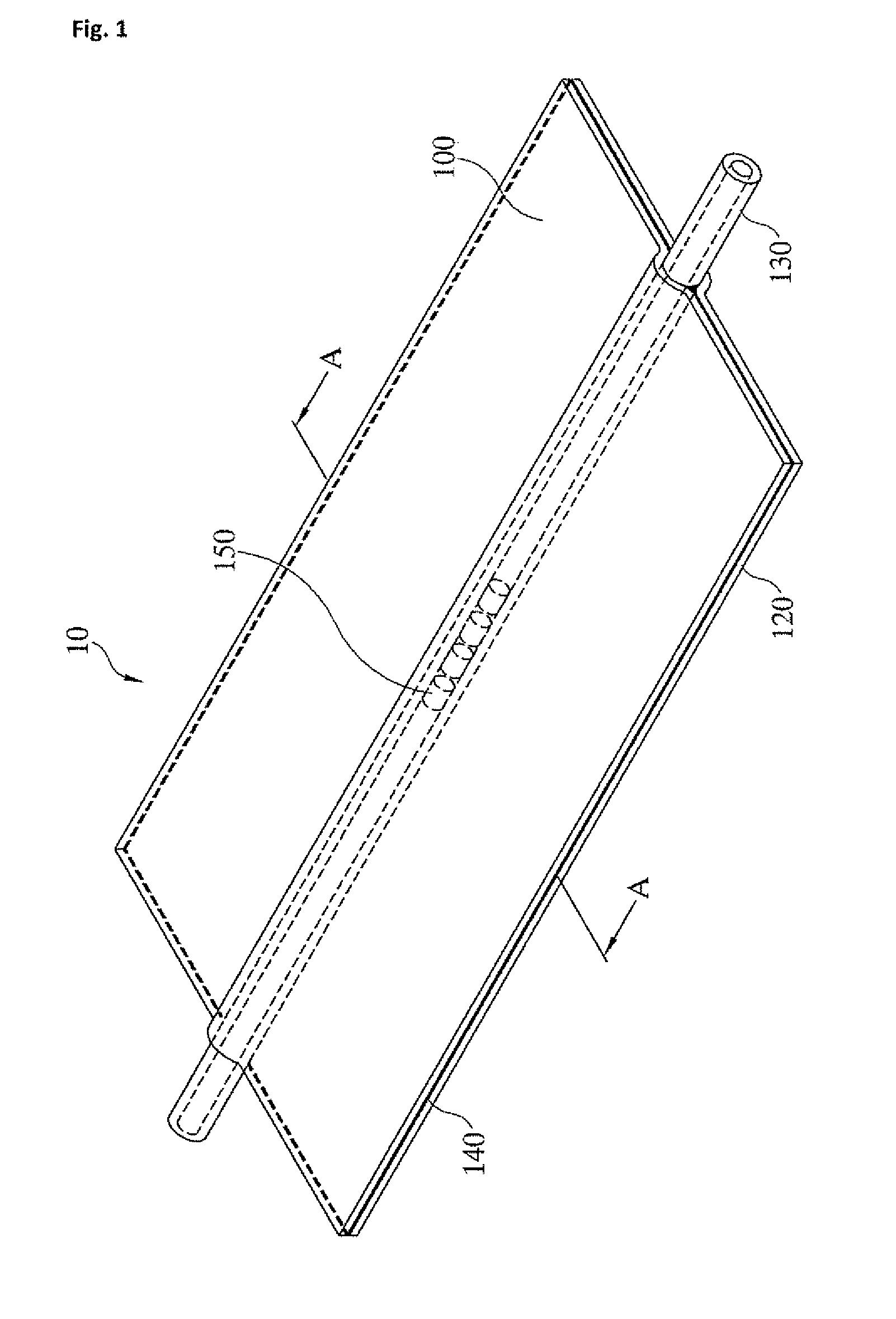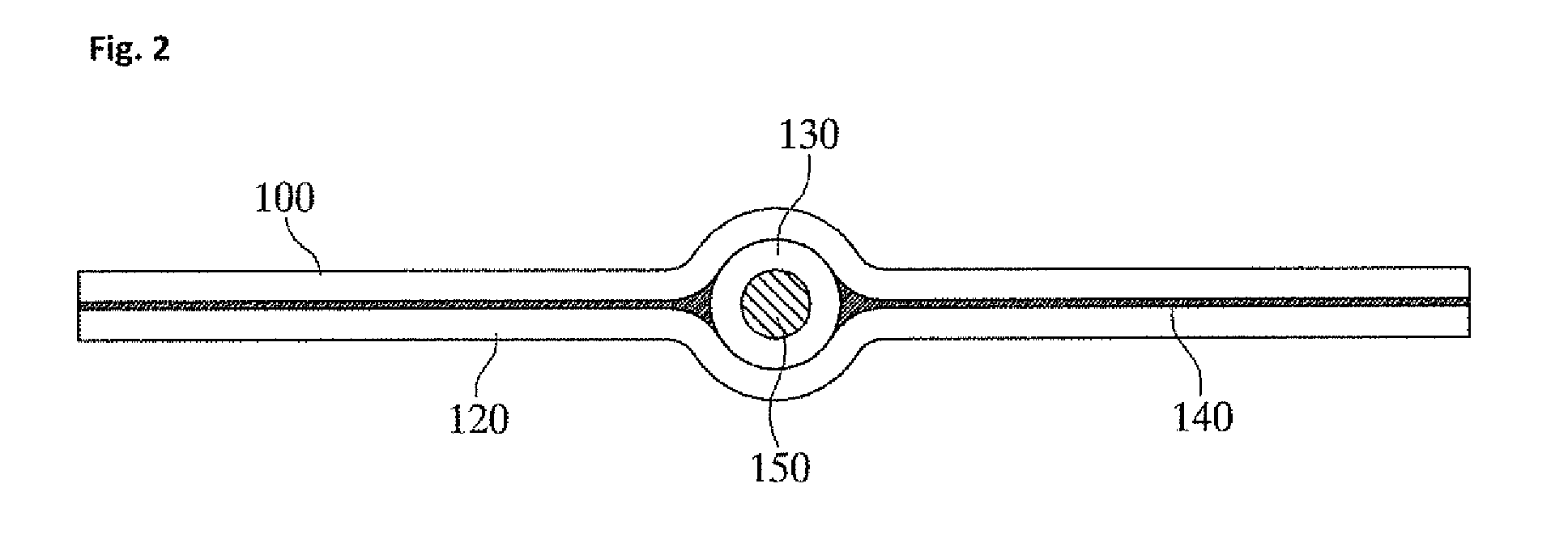Fbg sensor for measuring maximum strain, manufacturing method and using method
a manufacturing method and sensor technology, applied in the field of fbg sensors, can solve the problems of inability to detect the maximum strain of the object to be measured using the residual strain of the coated material, the likelihood of breaking of the coatingless optical fiber, and the reduction of the strength
- Summary
- Abstract
- Description
- Claims
- Application Information
AI Technical Summary
Benefits of technology
Problems solved by technology
Method used
Image
Examples
first embodiment
[0034]FIG. 1 is a perspective view of an FBG sensor 10 in accordance with the present invention, and FIG. 2 is a cross-sectional view of FIG. 1 in a direction A-A. As shown in FIGS. 1 and 2, an FBG sensor 150 is placed in the middle portion of an optical fiber 130. First and second metal foils 100 and 120 come in contact with the FBG sensor 150 up and down. The first and the second metal foils 100 and 120 and the optical fiber 130 are densely bonded together by an adhesive layer 140.
[0035]Each of the first and the second metal foils 100 and 120 may be an aluminum foil having a thickness ranging from 10 μm to 30 μm. More preferably, each of the first and the second metal foils 100 and 120 may have a thickness ranging from 15 μm to 20 W. If the thickness is less than 10 μm, the metal foil is torn when being handled or it is difficult to manufacture the metal foil. If the thickness is greater than 30 μm, it may be difficult to accurately measure the residual strain of the metal foil be...
second embodiment
[0045]In addition, step for bonding the brackets 160a and 160b as in the second embodiment shown in FIG. 3 may be added, if necessary. The pair of brackets 160a and 160b is bonded at positions spaced apart from each other left and right about 2.5 cm on the basis of the center thereof using epoxy resin. The manufacturing method of the FBG sensor 10, 20 according to the present invention is completed through such steps.
[0046]
[0047]A use method for measuring a maximum strain using the first and the second embodiments is described in detail below with reference to the accompanying drawings. First, a sensitivity coefficient Csen between a maximum strain and a residual strain is defined as follows.
Csen=emaxeres[Equation1]
[0048]In Equation 1, emax is a maximum strain, and eres is a residual strain. Thereafter, after the FBG sensor according to the present invention and a strain gauge are attached to a specific sample, a tensile test is performed in a tensile tester. The sensitivity coeffic...
PUM
| Property | Measurement | Unit |
|---|---|---|
| thickness | aaaaa | aaaaa |
| thickness | aaaaa | aaaaa |
| thickness | aaaaa | aaaaa |
Abstract
Description
Claims
Application Information
 Login to View More
Login to View More - R&D
- Intellectual Property
- Life Sciences
- Materials
- Tech Scout
- Unparalleled Data Quality
- Higher Quality Content
- 60% Fewer Hallucinations
Browse by: Latest US Patents, China's latest patents, Technical Efficacy Thesaurus, Application Domain, Technology Topic, Popular Technical Reports.
© 2025 PatSnap. All rights reserved.Legal|Privacy policy|Modern Slavery Act Transparency Statement|Sitemap|About US| Contact US: help@patsnap.com



